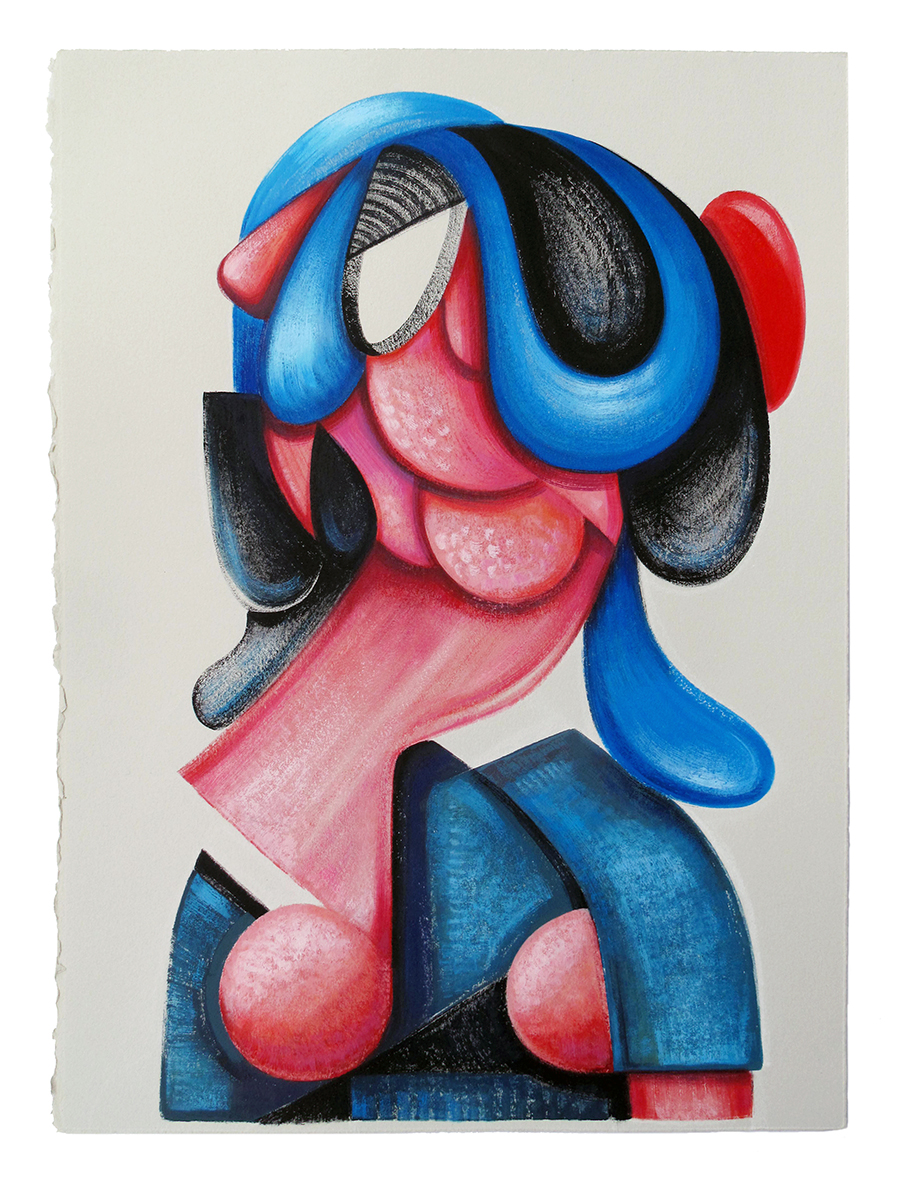This article was originally published in Amadeus issue 04.
The amalgamation of technical and conceptual is a style all its own, and a great brilliance of visual artist Robert Pokorny. Balanced in texture, colors and shape, his work transcends that of one dimensional art with the presence of the subconscious, weaving dissolution with life and great certainty with chance.
How would you describe your practice, and the use of color, shape and line?
My practice is an on going process. In other words, it never leaves me. I am always thinking about art and constantly creating. Thoughts seep in and become ingrained in my memory. As for the formal elements, I overtly use color, shape and line to create. Looking at my surroundings I subconsciously and consciously break up environments into formal elements, sometimes to the chagrin of others around me.
Can you run us through your process?
In the beginning stages I’m constantly thinking, sketching and exploring ideas with a lot of ambiguous ground being covered.
How much work is pre-planned and how much room do you leave for spontaneity?
While painting, I look to reach a certain level of disappearing and let the actions and paint dictate what may unfold. There has got to be some level of spontaneity in the work or I would lose interest.
Your work deals with multiple types of brush strokes – heavy, thick, faint, short, curved – all in one piece. What is the conceptual content of this stylistic effect?
My marks are put down on an intuitive level. As I create each mark, intuition and trust is key. The push and pull of my mark making is a reaction to the piece, and this can ride a precarious line of failure or success.
Tell us about the ‘Derivations’ and ‘Formations’ series. Do you see them as complementary in composition and conceptually, or inversions of one another?
The two series are intertwined to one another. They both carry a similar skeletal system but satisfy different sensibilities. Both series start on an intuitive level but depending on how much they form they act on different spectrums. ‘Derivations’ satisfies more of a cerebral quality while ‘Formations’ taps into an emotional side.
Your ‘Formations’ series includes paintings that closely resemble the setup of a portrait, but include abstracted, mangled, cubist formations in place of your subjects’ faces. Can you talk a little about the distortion of faces in your work and how that connects and is representative of your overarching commentary on the vapidness of our present culture?
Instead of saying vapidness of our present culture, I feel it is rather a subtle injection of this “surface” quality. The portrait pieces in ‘Formations’ are more of a psychological search for meaning and present a personal honed version of reality. What you see is a hybridization of figurative and abstraction. Finding the balance between the two satisfies me. There is this unconscious internal dialogue going on and it’s coalescing together into these portraits. I look to artists such as Picasso, Guston, Matisse, Bacon, Dekooning, Park and Hammersley for my inspiration and challenge. I look to continue my dialogue with these artists and inform my technique within the contemporary setting.
You have a Masters in Art from CSULB. What role does your academic background play into your art?
Having a Masters in Fine Art taught me how to break the rules.
When was the last time you showed your work? Do you have plans for a show anytime soon?
I showed in 2014 when I started working with Aureus Contemporary Gallery, exhibiting in Washington D.C. and Miami. For 2015 my paintings will be on view in New York City and introduced to the European market in Brussels and Basel.
You’ve been creating and devoted to your art for over twenty years. What were some of the largest shifts in style and aesthetic over the years? And how did you come to start creating in your current style?
Art is a lifetime pursuit. I feel the growing process should never end, and the ability to increase ones visual vocabulary in new and different ways is part of the unexpected and mysterious journey.
Looking back at my art I see a logical stylistic shift, some things stayed and other parts fell off. My current work is the culmination of constantly creating; never ending exploring and organically letting it evolve into its current state.
What is your workspace like? Give us a verbal tour.
Pretty simple. Desk, easel, chair, paper, paint, brushes, books, piles of sketchbooks, light, dog, cat, music, wife, sometimes wine, a little nudity and lots of open space. It’s all about the space.
For more from Robert Pokorny follow him on Instagram @robertpokorny.

Formations – MF5 (Frederick) – 11″ x 15″ – cel vinyl/acrylic on BFK Rives – 2014 – Private Collection
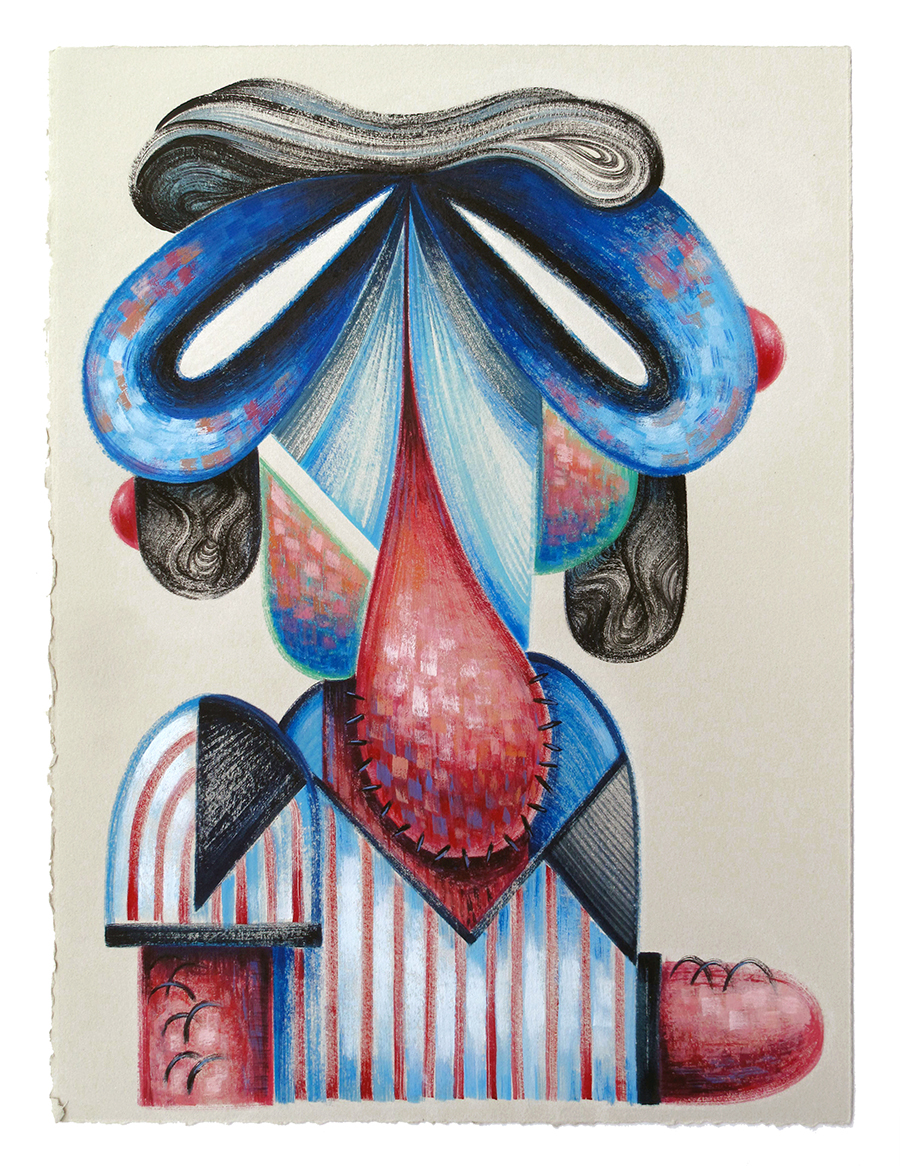
Formations – MF2 (Sergio) – 11″ x 15″ – cel vinyl/acrylic on BFK Rives – 2014 – Private Collection.
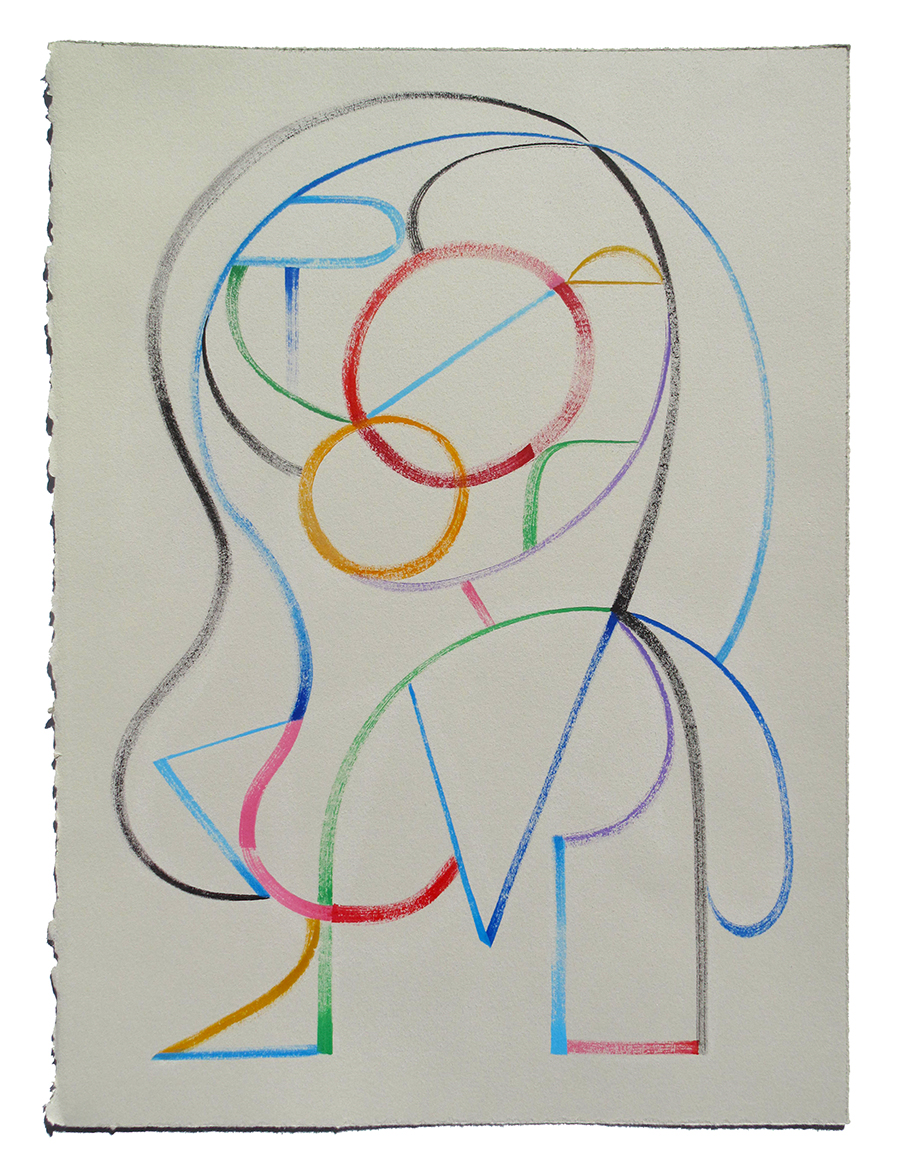
Derivations – WSIII (Woman Small Three) – 11″ x 15″ cel vinyl/acrylic on BFK Rives – 2014 – Private Collection.
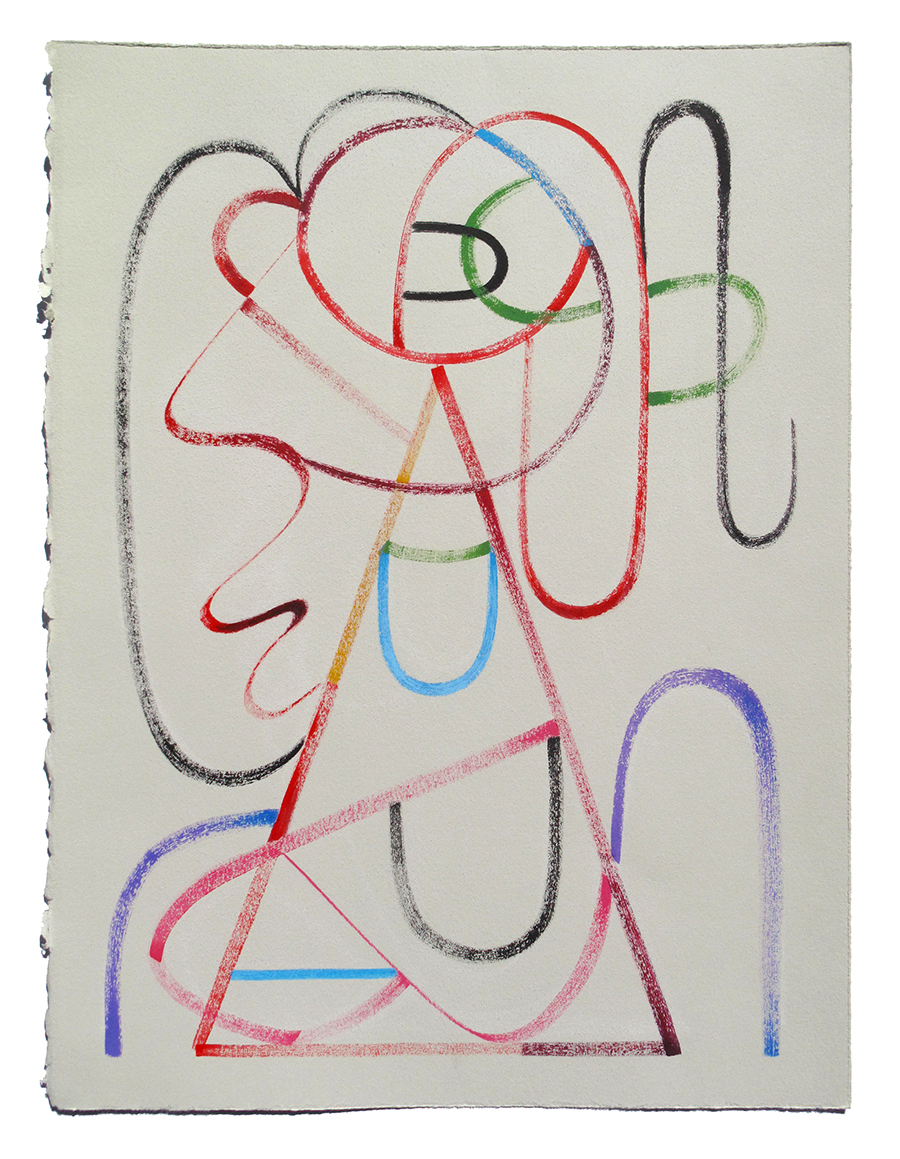
Derivations – WSII ( Woman Small Two) – 11″ x 15″ cel vinyl/acrylic on BFK Rives – 2014.
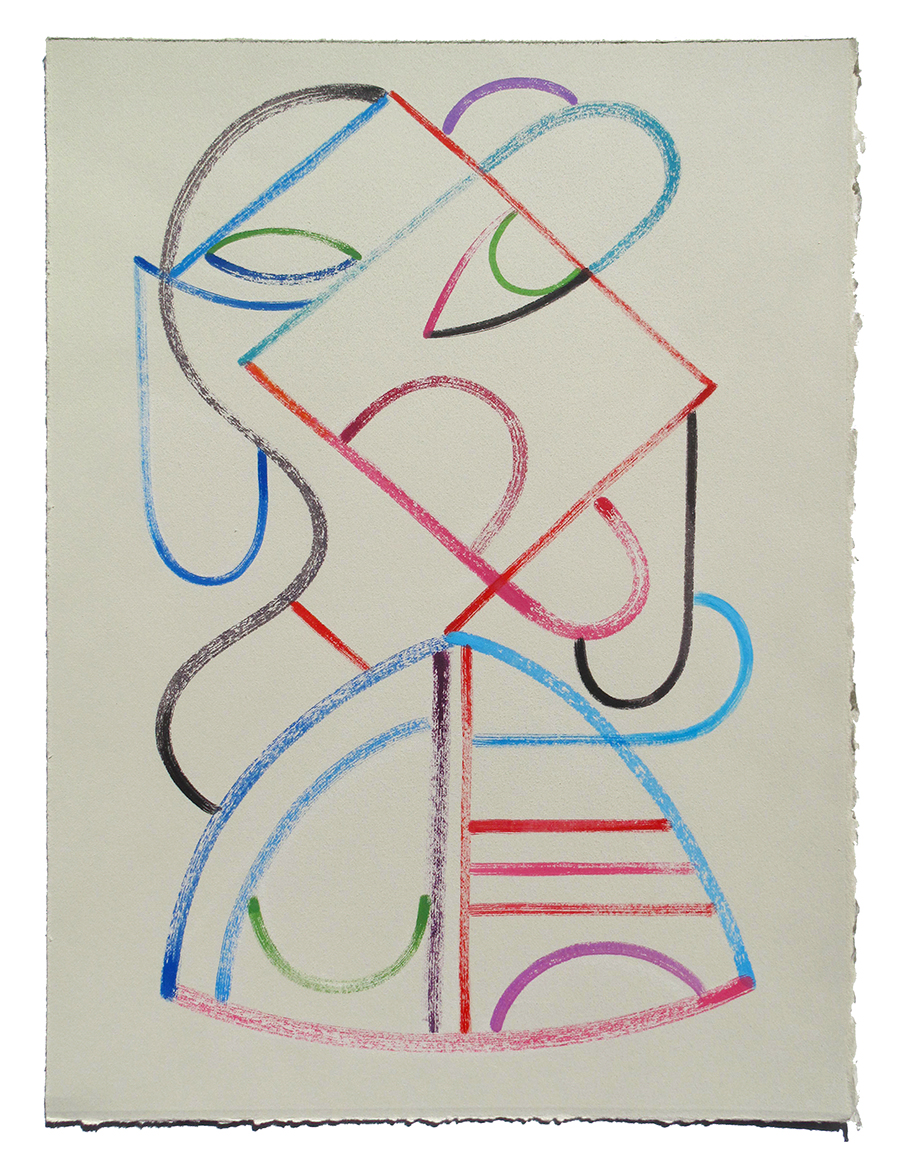
Derivations – WSI ( Woman Small One) – 11″ x 15″ cel vinyl/acrylic on BFK Rives – 2014.
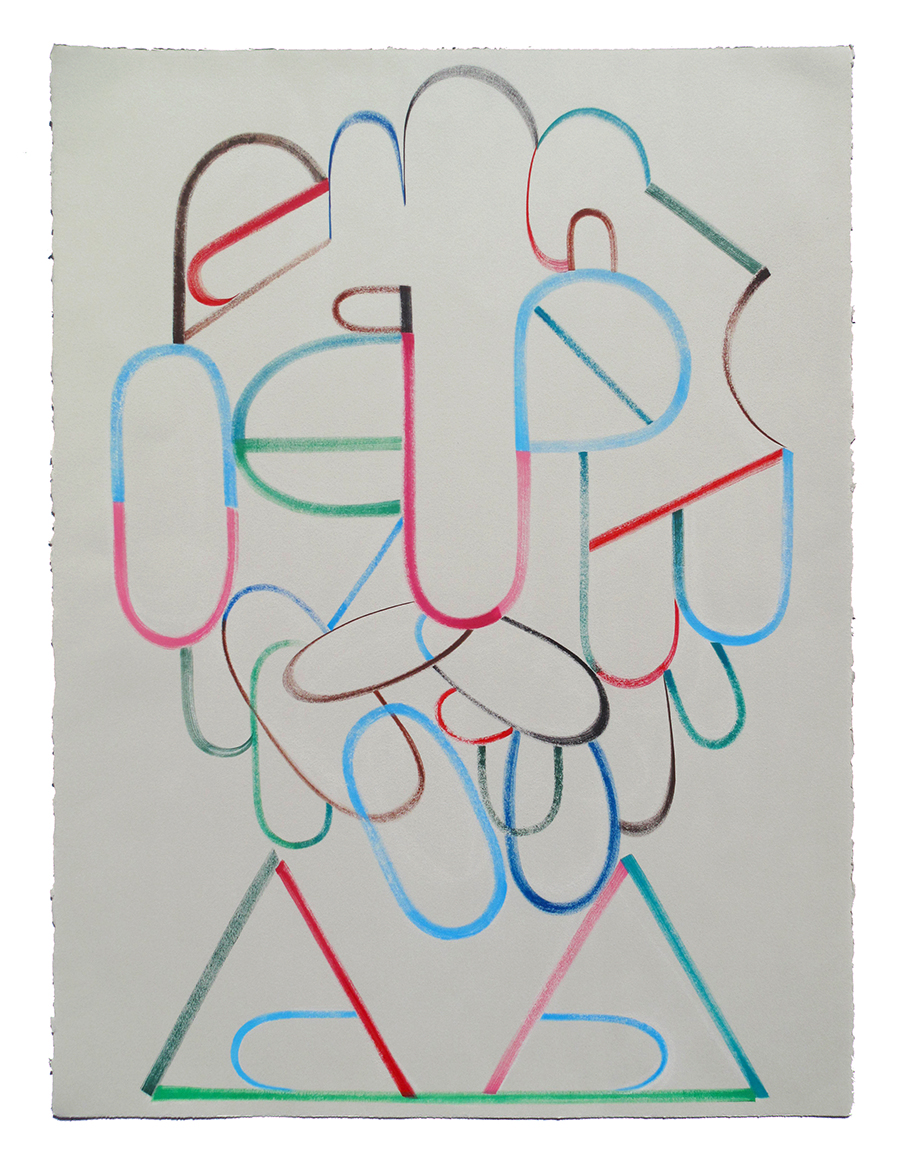
Derivations – MLI (Man Large One) – 22″ x 30″ cel vinyl/acrylic on BFK Rives – 2014.

Formations – MF3 (Levi) – 11″ x 15″ – cel vinyl/acrylic on BFK Rives – 2014 – Private Collection.

